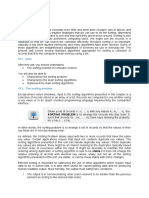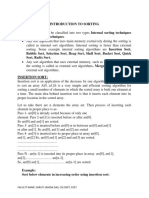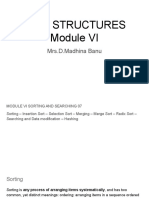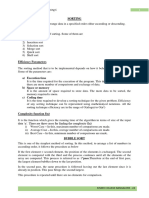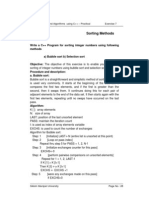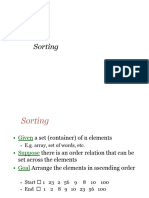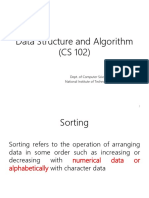0% found this document useful (0 votes)
9 views19 pagesUnit 08 - Searching and Sorting Techniques
Unit 8 covers searching and sorting techniques in data structures, focusing on various sorting algorithms such as bubble sort, merge sort, selection sort, and heap sort, as well as searching methods like sequential and binary search. The unit emphasizes the importance of sorting in optimizing data processing and the efficiency of different algorithms. Objectives include understanding sorting definitions, techniques, and the ability to describe searching methods.
Uploaded by
musicgg09Copyright
© © All Rights Reserved
We take content rights seriously. If you suspect this is your content, claim it here.
Available Formats
Download as PDF, TXT or read online on Scribd
0% found this document useful (0 votes)
9 views19 pagesUnit 08 - Searching and Sorting Techniques
Unit 8 covers searching and sorting techniques in data structures, focusing on various sorting algorithms such as bubble sort, merge sort, selection sort, and heap sort, as well as searching methods like sequential and binary search. The unit emphasizes the importance of sorting in optimizing data processing and the efficiency of different algorithms. Objectives include understanding sorting definitions, techniques, and the ability to describe searching methods.
Uploaded by
musicgg09Copyright
© © All Rights Reserved
We take content rights seriously. If you suspect this is your content, claim it here.
Available Formats
Download as PDF, TXT or read online on Scribd
/ 19




